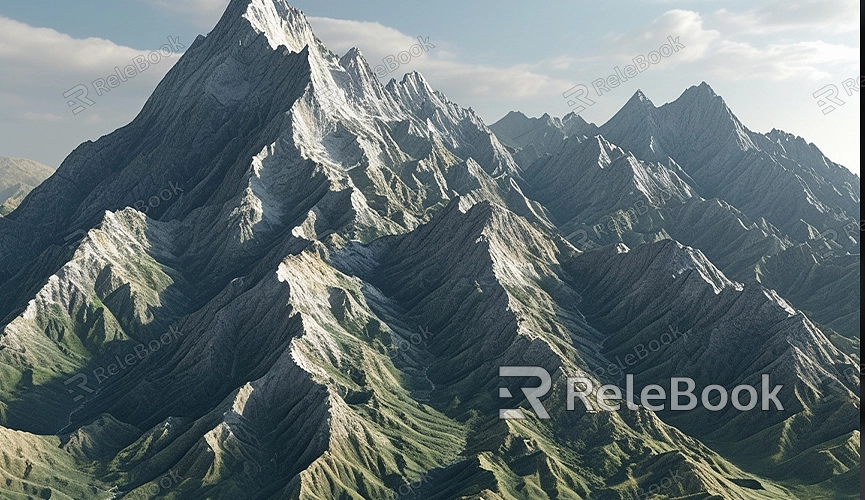How to Render Good Lighting in Blender
In 3D modeling and rendering, lighting is crucial. Proper lighting not only enhances the detail of your models but also boosts the overall visual impact, making your work appear more realistic and engaging. Blender, as a powerful 3D software, provides a range of lighting settings and tools to achieve various lighting effects. This guide will detail how to render good lighting effects in Blender.
1. Setting Up Basic Lights
Setting up lights in Blender is the foundation for achieving good lighting effects. Blender offers several types of lights, including Point Light, Sun Light, Spot Light, and Area Light. Each type has its specific uses and effects:
- Point Light: Emits light from a single point in all directions, suitable for simulating light bulbs.
- Sun Light: Emits parallel light rays, simulating natural light such as sunlight.
- Spot Light: Concentrates light within a cone-shaped area, ideal for simulating stage lighting.
- Area Light: Illuminates a specific area with a soft light, useful for filling shadows.
Adding appropriate lights to your scene is key. Typically, combining multiple light types yields the best results. For example, you can use a Sun Light as the main light source, a Point Light for additional illumination, and an Area Light to fill in shadows.

2. Adjusting Light Properties
The properties of your lights directly affect the final render. In Blender's Light Properties panel, you can set parameters such as intensity, color, distance, and shadows. Here are some common adjustment tips:
- Intensity: Adjust the light’s strength to control its brightness. Higher intensity makes the light brighter but can cause overexposure. Proper intensity helps highlight details in your model.
- Color: Changing the light color affects the scene’s mood. Warm light creates a cozy environment, while cooler light suits a more technological or futuristic scene.
- Shadows: In the “Shadows” options, you can choose the type of shadow, such as soft or hard shadows. Soft shadows simulate natural gradients, making shadow edges appear smoother.
3. Using HDRI Environment Lighting
HDRI (High Dynamic Range Imaging) is vital for providing realistic environmental lighting. Blender allows you to apply HDRI images to your scene using environment textures, offering natural and realistic lighting effects. To use HDRI lighting:
1. Go to the “World” panel and select “Environment Texture” in the “Color” option.
2. Import your chosen HDRI image. Free HDRI images are available on various resource websites. Select an image suitable for your scene and adjust its strength to achieve the desired lighting effect.
4. Adding Reflection and Refraction Effects
To further enhance lighting effects, you can add reflection and refraction to materials. In Blender’s Material Properties panel, adjusting the material’s reflection and refraction values allows your model to display more detail under lighting. For example, glass or water materials often require higher reflection and refraction values to simulate realistic optical effects.
5. Optimizing Lighting with Render Engines
Blender provides two main rendering engines: Cycles and Eevee. Cycles is a ray-tracing-based renderer that offers highly realistic lighting but is slower. Eevee is a real-time rendering engine suitable for fast previews and real-time rendering. Choose the appropriate render engine based on your project needs and adjust lighting settings accordingly to achieve the best rendering results.
6. Post-Processing and Color Grading
After rendering, you can use Blender’s Compositor for post-processing. Add effects like color correction, bloom, or lens flares to further enhance lighting effects. Adjust brightness, contrast, and hue to achieve the final look you desire.
Using high-quality textures and HDRI images can significantly improve your work's quality during the creation and rendering process. For high-quality 3D textures and HDRIs, you can download them for free from [Relebook](https://textures.relebook.com/). If you need exquisite 3D models, visit [Relebook](https://3dmodels.relebook.com/) for a wide range of premium resources. These assets can help you optimize lighting effects and enhance the overall quality of your models.
Rendering good lighting in Blender involves considering multiple factors, including light types, light properties, HDRI environment lighting, reflection and refraction effects, and render engine selection. By properly setting up lights, adjusting material properties, and using post-processing tools, you can create stunning visual effects. We hope this guide helps you master the art of rendering lighting in Blender. Whether for animation or static images, good lighting is key to achieving high-quality renders.

